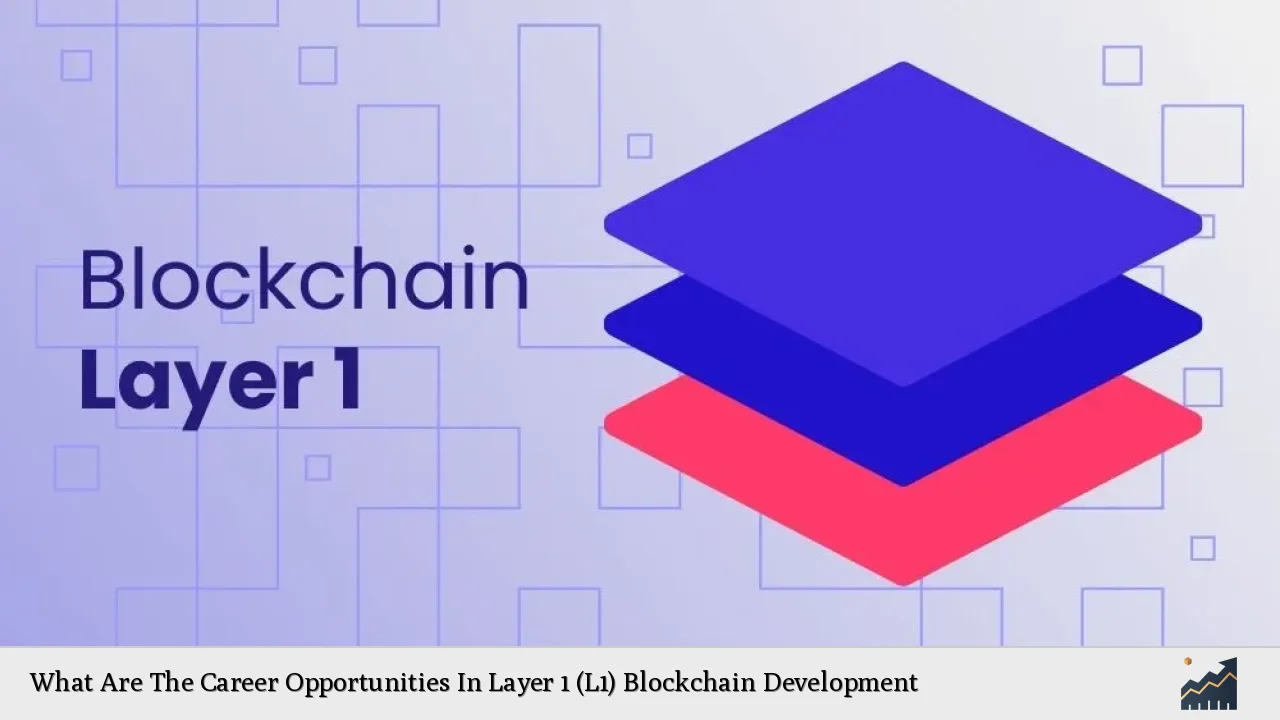The rise of Layer 1 (L1) blockchain technology has created a significant demand for skilled professionals across various sectors. L1 blockchains, serving as the foundational layer for decentralized applications and cryptocurrencies, are crucial in ensuring secure and efficient transactions. As the blockchain ecosystem continues to evolve, career opportunities in this domain are expanding rapidly. This article explores the current job market, key roles available, required skills, and future trends in L1 blockchain development.
| Key Concept | Description/Impact |
|---|---|
| Layer 1 Blockchains | The foundational blockchain networks that provide the core infrastructure for decentralized applications and transactions. |
| Job Demand | The demand for blockchain professionals is projected to reach an all-time high in 2024, with various roles emerging across sectors. |
| Salary Trends | Blockchain developers can earn between $150,000 and $175,000 annually, reflecting the high demand for specialized skills. |
| Remote Work Opportunities | 42% of blockchain developer jobs are remote, catering to modern workforce preferences. |
| Market Growth | The blockchain market is expected to see spending nearing $19 billion by 2024, highlighting its increasing adoption across industries. |
Market Analysis and Trends
The landscape of Layer 1 blockchains is marked by rapid growth and innovation. According to recent reports, Layer 1 blockchains have surged significantly in value, with some tokens experiencing increases of over 7,000% since the start of 2024. This growth is largely attributed to renewed interest in cryptocurrencies, driven by political events and technological advancements.
- Market Capitalization: As of late November 2024, Layer 1 blockchains collectively command a market cap exceeding $2.8 trillion. Bitcoin remains the dominant player, accounting for nearly 70% of this market share.
- Emerging Players: Newer L1 projects like Mantra and Sui have demonstrated remarkable growth due to strategic partnerships and innovative applications in decentralized finance (DeFi) and tokenization.
- Competitive Landscape: While established players like Bitcoin and Ethereum continue to perform well, they face increasing competition from newer entrants that offer enhanced scalability and lower transaction costs.
Implementation Strategies
Organizations looking to leverage L1 blockchain technology must adopt effective implementation strategies:
- Skill Development: Companies should invest in training programs to equip their teams with necessary blockchain skills. This includes understanding consensus mechanisms, cryptographic principles, and smart contract development.
- Collaboration: Engaging with cross-functional teams—such as product managers, UX/UI designers, and legal experts—will ensure that blockchain solutions are well-rounded and meet diverse business needs.
- Agile Methodologies: Adopting agile project management practices can facilitate quicker iterations and adaptations in response to market changes.
Risk Considerations
Investing in L1 blockchain development comes with inherent risks:
- Regulatory Uncertainty: The evolving regulatory landscape poses challenges for blockchain projects. Companies must stay informed about compliance requirements to avoid legal pitfalls.
- Market Volatility: The cryptocurrency market is characterized by high volatility. Organizations should prepare for significant fluctuations in asset values that could impact project funding and sustainability.
- Technological Risks: Security vulnerabilities in smart contracts or consensus algorithms can lead to substantial financial losses. Rigorous testing and auditing processes are essential.
Regulatory Aspects
Understanding regulatory frameworks is crucial for anyone involved in L1 blockchain development:
- Compliance Requirements: Different jurisdictions have varying regulations concerning cryptocurrency transactions and blockchain technology. Companies must ensure compliance with local laws to operate effectively.
- Legal Expertise: The demand for legal professionals specializing in blockchain is rising as businesses seek guidance on navigating complex regulations.
- Global Considerations: Regulatory environments differ significantly across regions. For instance, North America may lag behind Asia due to stricter regulations affecting innovation.
Future Outlook
The future of career opportunities in L1 blockchain development appears promising:
- Job Growth Projections: The Proof of Search report indicates that the job market for blockchain professionals will experience substantial growth in 2024 as companies ramp up hiring efforts.
- Diverse Career Paths: Roles such as blockchain developers, architects, project managers, UX/UI designers, and quality assurance engineers will be in high demand. Each role requires specific skills that cater to different aspects of blockchain projects.
- Salary Expectations: Salaries for blockchain-related positions are expected to continue rising due to the increasing demand for specialized talent. Developers can anticipate earnings between $150,000 and $175,000 annually.
Frequently Asked Questions About Career Opportunities In Layer 1 Blockchain Development
- What qualifications do I need to become a Layer 1 blockchain developer?
Typically, a degree in computer science or a related field is required. Proficiency in programming languages such as Solidity or Rust is also essential. - Are there remote job opportunities in this field?
Yes, approximately 42% of blockchain developer jobs are remote, allowing flexibility in work arrangements. - What are the highest-paying roles within Layer 1 blockchain development?
Blockchain developers generally earn between $150,000 and $175,000 annually. Other high-paying roles include solutions architects and project managers. - How can I stay updated on industry trends?
Engaging with online communities, attending conferences, and following industry news outlets can help you stay informed about developments in the blockchain space. - What are the main challenges faced by Layer 1 blockchains?
Key challenges include scalability issues, regulatory compliance hurdles, and competition from Layer 2 solutions. - Is prior experience necessary for entry-level positions?
While prior experience can be beneficial, many entry-level positions offer training programs or internships that provide practical experience. - What industries are adopting Layer 1 blockchain technology?
The technology is being adopted across various sectors including finance, supply chain management, healthcare, and entertainment. - What role does community engagement play in the success of a Layer 1 project?
A strong community can drive adoption and provide valuable feedback for improvements. Engaging users helps build trust and enhances project credibility.
In conclusion, the career opportunities within Layer 1 blockchain development are vast and varied. As the technology continues to mature and integrate into mainstream applications across industries, professionals equipped with the right skills will find themselves at the forefront of this transformative sector.

